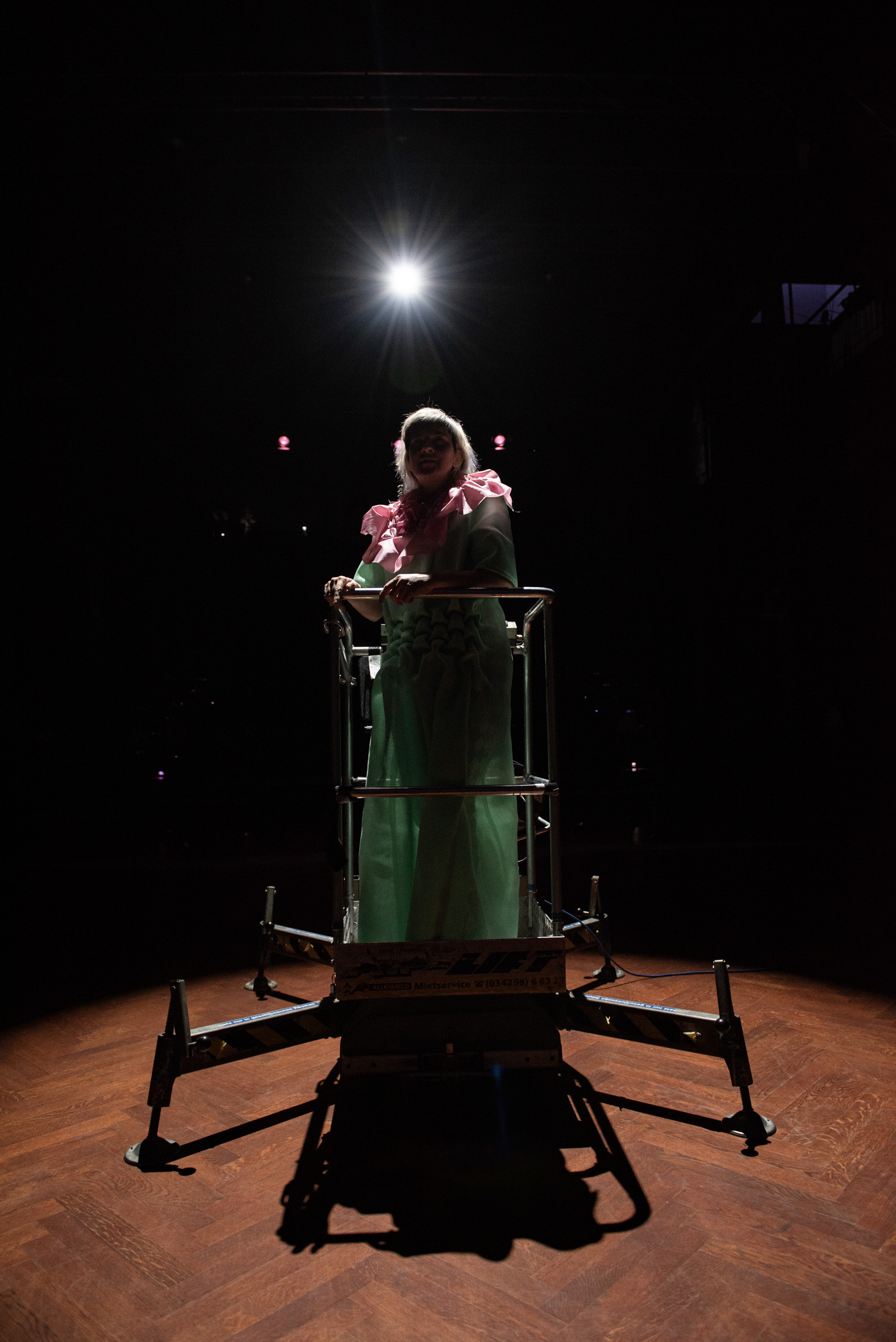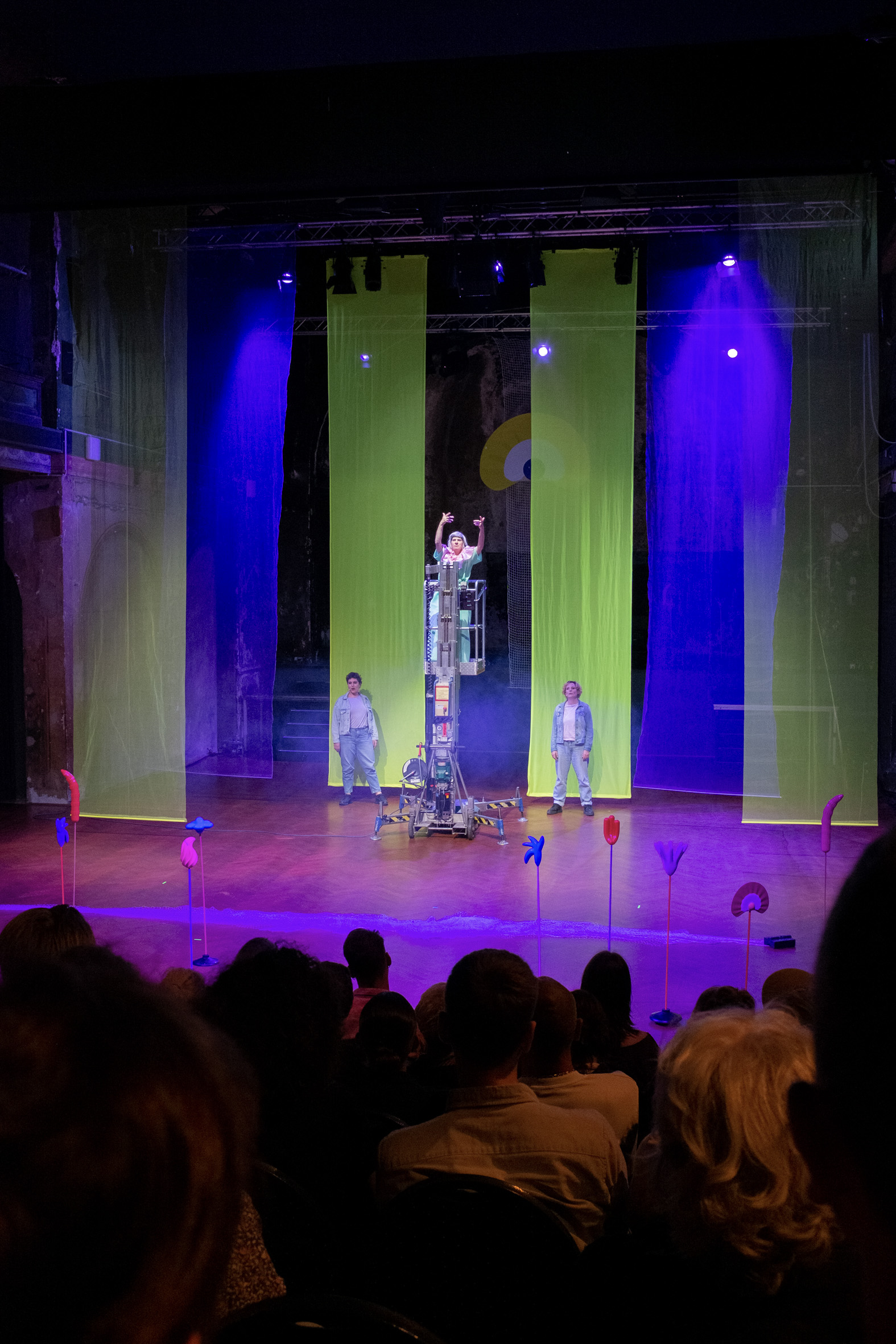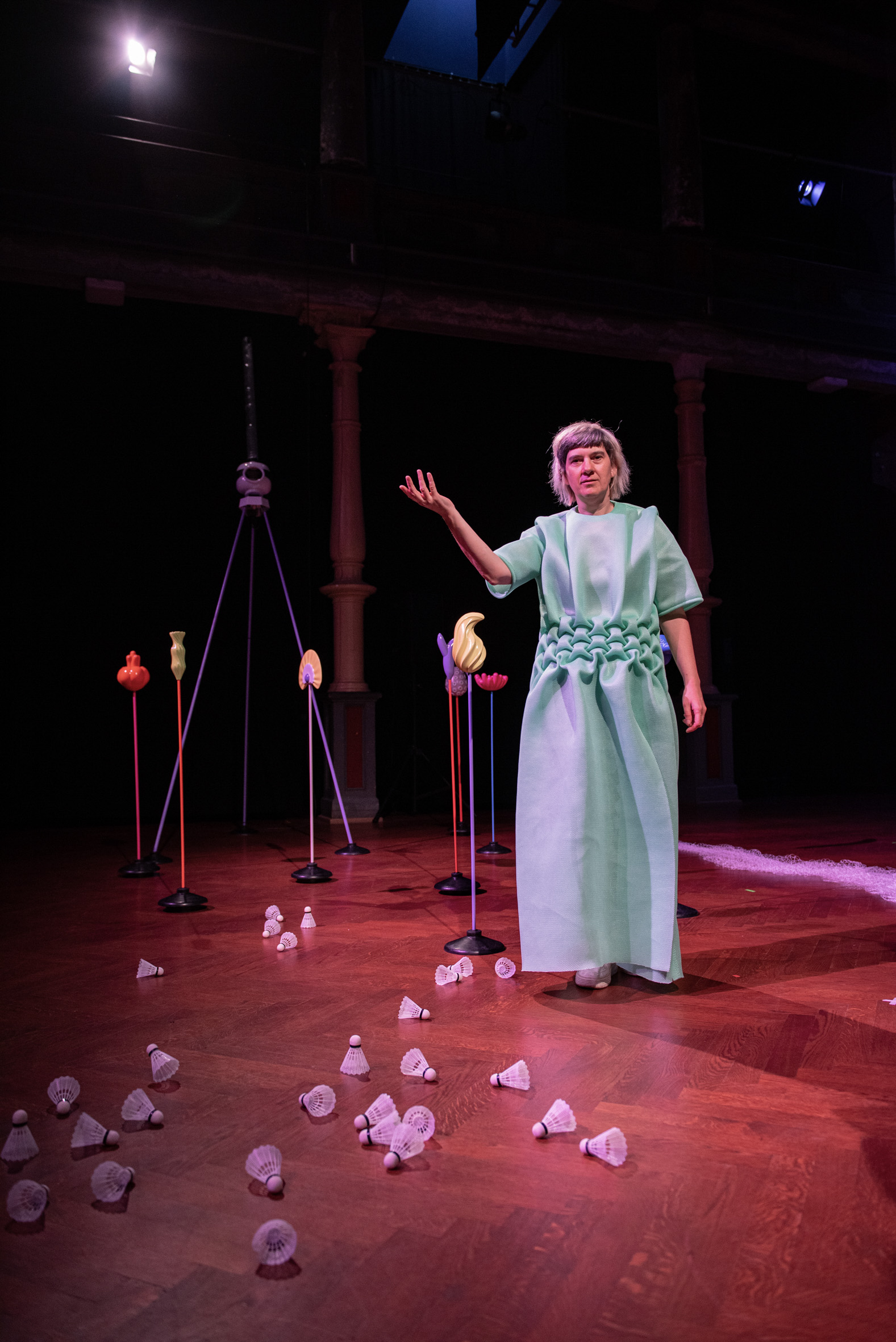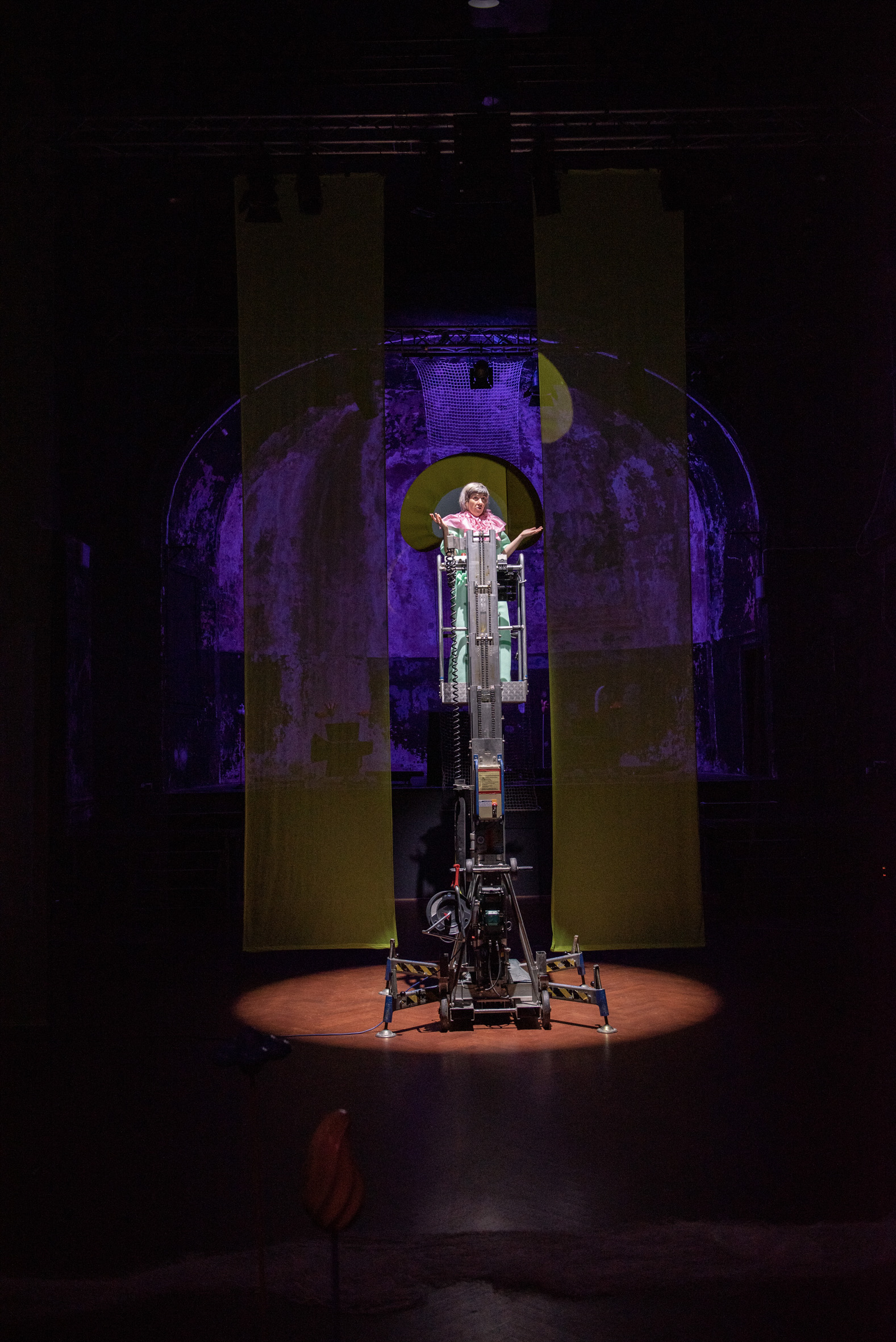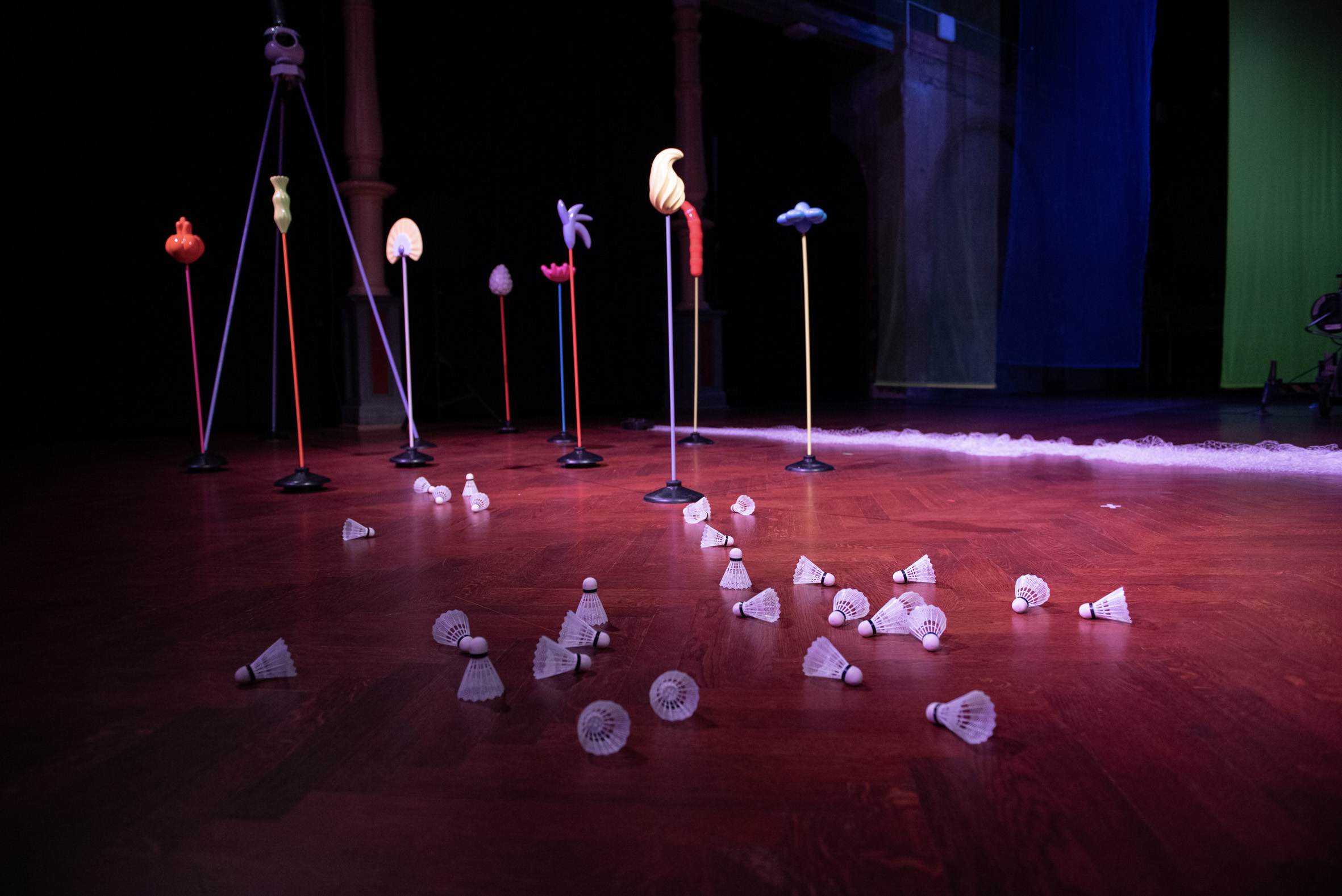Die Figur in der Mitte, 2025
Bühnenbild für die Performance von Angelika Waniek
Performance: Angelika Waniek
Vocals: Constanze Burger, Clara Hofmann
Dramaturgie: Elena Strempek
Produktion: Katja Berger
Bühnenbild: Daniel Theiler
Kostüm: Momme Ostendorf
Sound design: Bertolt Meyer
Fotos: Thomas Puschmann
Eine Produktion von Angelika Waniek in Koproduktion mit der Schaubühne Lindenfels.
[English version below]
Das Bühnenbild folgt der Idee einer vertikalen Raumordnung, in der die Bewegung nach oben und unten den Rhythmus bestimmt. Die Vertikalität durchzieht alle Elemente, von der Hebebühne bis zu den von der Decke fallenden Stoffbahnen, und strukturiert den Raum als mechanische und visuelle Achse.
Mehrere netzartige Banner hängen hintereinander und öffnen den Raum in die Tiefe. Projektionen aus Text und Bild durchdringen diese Ebenen und erzeugen ein Gefüge aus Licht und Bewegung. Die Netze verweisen auf Raster, Grenze und Spiel, auf funktionale Strukturen, die zugleich auf Durchlässigkeit und Illusion beruhen.
Im vorderen Bereich erscheinen organisch anmutende Körper, die sich drehen und mit der Figur interagieren. Ihre scheinbar autonome Bewegung kontrastiert die technische Ordnung und führt das Prinzip des Lebendigen oder dessen Simulation in die Szene ein.
Eine Badmintonmaschine schießt in unregelmäßigen Abständen Federbälle durch den Raum. Der berechnete Bogen ihres Flugs verweist auf Schwerelosigkeit und auf den Versuch, das Fallen für einen Moment auszusetzen.
Das Bühnenbild entstand in enger Abstimmung mit der Stückentwicklung und versteht sich als räumliche Erweiterung ihrer Themen: das Verhältnis von Mensch und Maschine, Kontrolle und Verhalten, Technik und Spiel.
The stage design follows the idea of a vertical spatial structure in which upward and downward movement defines the rhythm of the piece. Verticality runs through all elements, from the lift platform to the fabric panels descending from the ceiling, and shapes the space as both mechanical and visual structure.
Several net like banners hang in sequence and open the stage into depth. Projections of text and image pass through these layers and create a composition of light and movement. The nets evoke grids, boundaries and play, functional structures that also refer to permeability and illusion.
In the front area, organically shaped bodies appear, rotating and interacting with the central figure. Their seemingly autonomous movement contrasts with the precise mechanics of the lift and introduces the principle of the living, or rather its simulation, into the scene.
A badminton machine intermittently shoots shuttlecocks through the space. The calculated arc of their trajectory points to weightlessness and to the attempt to suspend falling for a brief moment.
Developed in close dialogue with the dramaturgy and text, the stage design serves as a spatial extension of the piece’s central ideas: the relationship between human and machine, control and behavior, technology and play.
